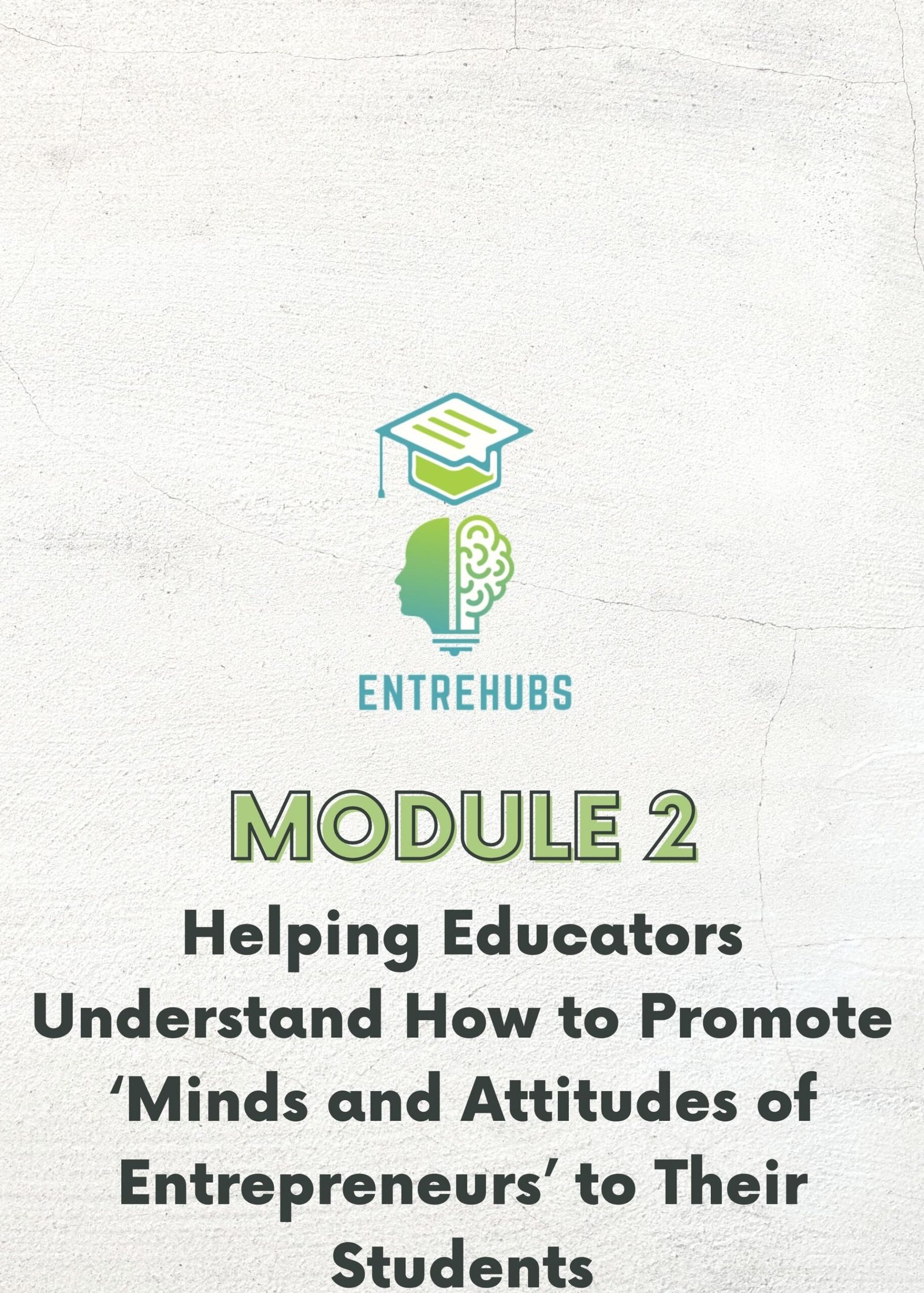Minds and Attitudes for Entrepreneurs

About Course
Aim: The aim of this module is to introduce educators to the concept of fostering entrepreneurial mindsets and attitudes in students, and to equip them with the knowledge, skills, and tools to design and implement entrepreneurial approaches as part of their teaching strategies. Learning Objectives: The learning objectives of this module are to:
-
Introduce educators to the key concepts of entrepreneurial mindsets and attitudes.
-
Equip educators with the knowledge and tools to encourage entrepreneurial thinking in their classrooms.
-
Provide step-by-step guidelines on how to design and implement activities that promote entrepreneurial behaviors, such as creativity, problem-solving, and risk-taking.
-
Encourage the integration of entrepreneurship education across various subjects through experiential, hands-on, and real-world problem-solving approaches.
-
Facilitate connections between educational institutions and the business sector to enhance practical exposure for students.
Learning Outcomes: By the end of this module, educators will be able to:
-
Define what an entrepreneurial mindset is and identify its key characteristics.
-
Understand the teaching approaches that foster entrepreneurial thinking and attitudes in students.
-
Design and implement classroom activities that nurture entrepreneurial traits such as creativity, resilience, and initiative.
-
Integrate entrepreneurship education into different subjects, preparing students to think critically and act entrepreneurially.
Course Content
Section 1 – Mınds And Attıtudes For Entrepreneurs
-
Mınds And Attıtudes For Entrepreneurs
00:00
Section 2 – Shifting Academia to Include Entrepreneurship
Section 3 – Why Equipping Educators to Foster Entrepreneurial Mindsets in Students is Critical
Section 4 – The Importance of Ice-Breaking Activities in a Classroom
Section 5 – The Importance Of Entrepreneurial Mindset
Section 6 – Design Thinking in Entrepreneurial Education
Section 7 – Fostering an Entrepreneurial Mindset
Section 8 – How To Apply Desıgn Thınkıng Prıncıples
Section 9 – How To Develop Reflective And Experiential Learning
Section 10 – How To Develop Critical Thinking And Problem-Solving Skills
Section 11 – How To Cultivate A Sense Of Purpose And Social Responsibility
Section 12 – What Elements Make Up The Entrepreneurial Mindset
Section 13 – Strategies To Guide Students To Understand The Entrepreneurial Mindset
Section 14 – Strategies To Integrate Design Thinking In The Mindset
Section 15 – How To Guide Students To Foster Key Mindset Attitudes
Section 16 – Ideas To Help Students Develop Problem-Solving Techniques
Section 17 – Collaboration And Teamwork Ideas
Section 18 – Ideas On How To Adopt Teaching Strategies
Section 19 – Ideas On How To Help Students Explore Entrepreneurial Mindsets
Section 20 – What Is Growth Mindset And How To Build It
TOOLKIT ACTIVITIES
Quiz
Activites
Student Ratings & Reviews

No Review Yet

